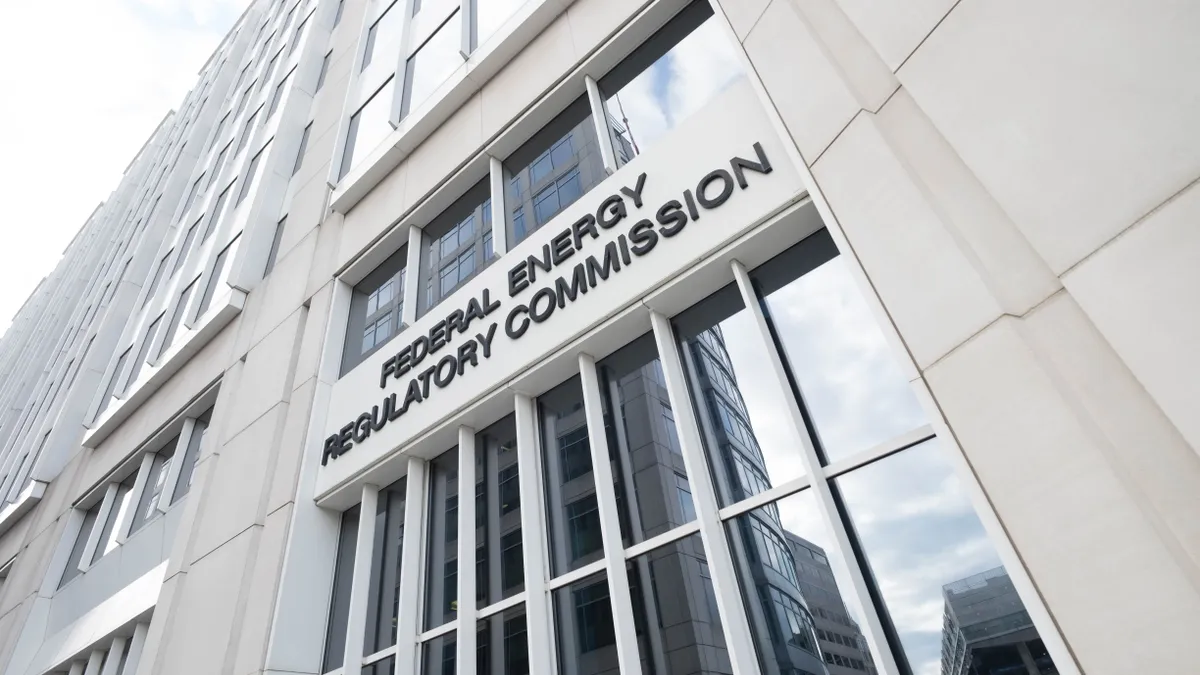Dive Brief:
-
Federal regulators on Sept. 1 issued an order reversing 40 years of precedent under the Public Utility Regulatory Policies Act (PURPA).
-
The Federal Energy Regulatory Commission denied qualifying facility (QF) status to a facility in Montana with a net capacity of 80 MW of solar power, the legal threshold a facility must meet to qualify as a small power production facility, asserting that because its gross capacity is 160 MW, it does not meet the legal threshold for a QF. Its order is a departure from precedent set by FERC in its 1981 case Occidental Geothermal, Inc., which determined a facility's eligibility under PURPA should be based on net capacity.
-
Legal experts say the conclusion refines the way that FERC is going to implement its standard for what constitutes a small power producer. But notably, the order intentionally does not address the critical question of whether the facility's 50 MW battery is a separate QF completely and how, if at all, battery storage should be considered in determining a QF's power production capacity.
Dive Insight:
This month's ruling marked a victory for the utilities industry in determining whether they have an obligation to purchase power from certain facilities under PURPA.
NorthWestern Energy in this case argued that the solar array and battery storage system constitute two separate QFs, and that because the Broadview Solar facility has 160 MW of panels, it exceeds the 80 MW threshold. Edison Electric Institute, the trade group for investor-owned utilities in the U.S., also argued that the facility was "artificially limit[ing]" its capacity to meet the QF output limit and secure a payment contract under PURPA.
EEI specifically calls out the increased sophistication of resources and the growth of new technologies, such as battery storage, arguing that with the advance in technology it is no longer appropriate to measure QF power production capacity based on net capacity.
In 2019, the Montana facility in question, Broadview, updated its filing as a QF with PURPA to reflect the addition of panels that allow it to have 160 MW of gross capacity, up from its original certification of 104.25 gross MW and net capacity of 80 MW. The developer argues that because its 160 MW solar, 50 MW battery facility connects directly to direct-current-to-alternating-current inverters, the maximum net capacity of the facility is still 80 MW.
"What this project did ... is they designed their facility with 160 MW of solar array capacity and co-located a 50 MW battery storage system to increase the facility's capacity factor and to produce 80 megawatts of AC capacity as much of the time as they can and have as high of a capacity factor as they can," said Brett Breitschwerdt, partner at law firm McGuireWoods. "The question that's presented to FERC is 'Is this what Congress intended when they enacted the 80 MW capacity limit in PURPA?'"
FERC's majority ruled that the facility's application marked a departure from previous QF qualifications, denying the project's eligibility, but punted on the question of whether battery storage should constitute its own facility, separate from the solar QF, and whether a storage facility should be considered capacity.
But "reading the majority's more strict view of how to interpret the standard of power production capacity under the statute, it seems likely that FERC would say 'Yes, storage on the DC side is power production capacity, similar to solar'" because it has the capability to inject energy into the utility's system, said Breitschwerdt.
Commissioner Richard Glick, however, indicated in his lone dissent he felt storage should not be considered a separate QF, and argued the facility deserved to retain its QF status.
Glick said that because the Broadview facility is "physically incapable of producing more than 80 MW of electricity for any subsequent use" it should still be considered a QF under PURPA. Further, enhancing the capacity factor only makes the facility more efficient, "a result I would have thought the Commission would be eager to encourage," he said.
As part of that argument, Glick noted that "Broadview's 50 MW battery system cannot 'produce' power in any conventional sense of that term."
"The bottom line is that while Broadview's configuration may allow it to more predictably produce electricity, that configuration does not give it a power production capacity greater than 80 MW," he wrote. "And that is what matters under PURPA."















